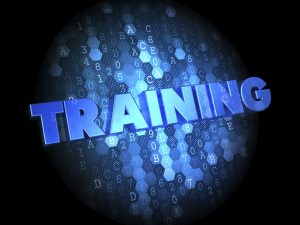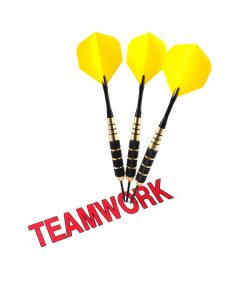
by Nita Brooks, Business Solutions Development Manager, NCI
Training Success: did you ever stop to ask why your training investments haven’t quite reached your objectives?
Training is expensive and you need to make sure all the time and money you spend is worth the investment (this applies to both live and online training). How do you make sure your employees use new training to reach a result that pays off? What should you have done differently from the planning to the execution stage?
The key to making it stick and bringing about changes that cause excitement and end in success requires careful planning and follow-up. Otherwise, you might be throwing your training dollars down the drain, bringing frustration to everyone involved. Sound familiar?
Follow these five easy steps to change a pattern of training that ‘just didn’t work’ to opening up exciting new phases of opportunities.
Step 1: ?Do your Homework – Prepare and Plan for Training Success

The effective application of new training depends on YOU, as a leader in the company. Don’t send your team to train without making a full commitment to support them in successfully applying their new knowledge.
As a leader, have some clear objectives on what the training will provide for your team. Review material beforehand so you know enough to answer any questions the trainee has on what it means to them and what it will do for them. Asses the skill sets of the trainee and anticipate how they will adapt to changes coming from new training. Schedule a meeting with the trainee to discuss the training and set objectives — this is key for training success.
Step 2: ?Meet with the Trainee before Training Begins
Expecting training to stick without preparing the trainee is unfair. Therefore, prep your people on what will happen and what the expectations are. Don’t let your trainee be one of those people who just ‘shows up’ and does not have a clue why they are there. Explain the real need for new training. You should be able to address the following questions:
- What will change after training?
- What does the training mean for the employee?
- What new tools are required?
- What support will you provide after training?
Most of all, share your objectives and set some guidelines for what you expect the trainee to accomplish during and after the training. Ask them to look for some valuable ‘nuggets’ learned during training that they can apply immediately upon return from class.
Step 3: ‘Set Up a Followup Meeting for Training Success
Prepare a list of follow-up questions before the meeting.
- What did you learn?
- What will you do differently now that you’ve had training?
- What gold ‘nuggets’ did you take away from training?
- What support and tools are needed to successfully apply your training?
Take the time to set some goals with the trainee, making sure to apply dates to accomplish the goals. Practice is the glue that makes training stick, so schedule practice sessions. If others attended the same class, then pair trainees together for practice. If senior teammates are already applying the same training, employ them in the practice sessions to share their knowledge and experiences.
Step 4: ?Monitor Progress, Measure Success, Give Feedback, and Coach the Trainee

A golden key that leads to success.
In addition, your support and feedback is critical to keeping new training alive and flourishing. Let employees know your active interest in their progress by asking a few critical questions along the way.
- So what recent accomplishments do you attribute to the new training?
- Tell me what has and has not worked out well in applying your training?
- How are you doing on your goals?
If you have been a leader any time at all, you know how important coaching is to help employees achieve goals. New training equals new information. So applying that new information plus receiving coaching equals new skills and new behaviors. Coaching and feedback should be an ongoing process. Don’t stop — because as soon as you do, you will see a drop in progress.

Training always implies teamwork. So the team must be all in when it comes to applying new ways of doing things as learned in training.
Finally, review the measured success of the goals you assigned. Assess the need for follow-up training. Make additional training available in the form of practice sessions, webinars, online training, and supplementary live classes.
Step 5: ?Engage Others in Changes from New Training
You cannot send one or two people to learn something new and expect the whole team to fully embrace any subsequent changes. So engage others on the team in a conscious effort to involve the entire team. Explain what changes new training has produced and how it will affect the future of the team. Highlight success stories. Assign team leaders to teach some of the basics to other employees on the team until they can attend training.
In conclusion, the effective application of new training depends on YOU, as a leader in the company. Don’t send your team to train without making a full commitment to support them in successfully applying their new knowledge. Most of all, your commitment, planning, and follow-up will determine whether training falls flat or becomes a successful return on your investment.
Make it happen!













Recent Comments